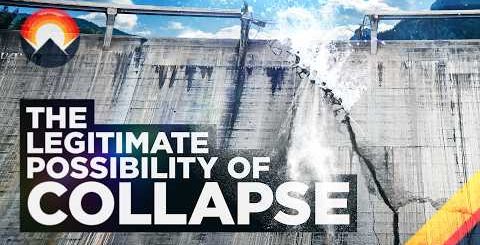Inside The Navy’s Indoor Ocean
The US Navy has an indoor ocean that can simulate any wave in the world. This video is sponsored by Brilliant. You can get started for free, or the first 200 people to sign up via https://brilliant.org/veritasium get 20% off a yearly subscription.
▀▀▀
Thanks to Kelley Stirling and the Naval Surface Warfare Center, Carderock Division for the visit.
Thanks to Miguel Quintero and Capt. Todd E. Hutchison for talking to us about the important work going on in the Maneuvering and Seakeeping Basin.
Thanks to Dr. Georgy Manucharyan at the University of Washington for his help in understanding ocean waves.
▀▀▀
References:
Webb, P. (2017). Introduction to Oceanography. Chapter 10: Waves. Online OER textbook. – https://ve42.co/Webb2017
Stewart, R. (2008). Introduction to Physical Oceanography. – https://ve42.co/Stewart2008
van den Bremer, T. S. & Breivik, Ø. (2018). Stokes drift. Phil. Trans. R. Soc. A. – https://ve42.co/Bremer2017
Monismith, S. (2020). Stokes drift: Theory and experiments. Journal of Fluid Mechanics, 884, F1. – https://ve42.co/Monismith2020
Young, I. R. (1999). Wind Generated Ocean Waves. Elsevier. p. 83. – https://ve42.co/Young1999
Wright, P. Island Physics. 4.2 Formation of Waves – https://ve42.co/IslandPhysics
American Bureau of Shipping. (2016). Guidance Notes on Selecting Design Wave by Long Term Stochastic Method. – https://ve42.co/ABS2016
James, S. & Stull, R. (2019). Wave Characteristics. UBC ATSC 113 – Weather for Sailing, Flying & Snow Sports. – https://ve42.co/James2019
Garrison, T. (2009). Oceanography: An Invitation to Marine Science (7th ed). – https://ve42.co/Garrison2009
▀▀▀
Special thanks to our Patreon supporters:
James Sanger, Louis Lebbos, Elliot Miller, Brian Busbee, Jerome Barakos M.D., Amadeo Bee, TTST, Balkrishna Heroor, Chris LaClair, John H. Austin Jr., OnlineBookClub.org, Matthew Gonzalez, Eric Sexton, John Kiehl, Diffbot, Gnare, Dave Kircher, Burt Humburg, Blake Byers, Evgeny Skvortsov, Meekay, Bill Linder, Paul Peijzel, Josh Hibschman, Mac Malkawi, Mike Schneider, John Bauer, Jim Buckmaster, Juan Benet, Sunil Nagaraj, Richard Sundvall, Lee Redden, Stephen Wilcox, Marinus Kuivenhoven, Michael Krugman, Cy ‘kkm’ K’Nelson, Sam Lutfi
▀▀▀
Written by Derek Muller & Emily Zhang
Edited by Fabio Albertelli
Animation by Ivy Tello & Mike Radjabov
Filmed by Derek Muller & Emily Zhang
Additional video/photos supplied by Pond5 & Getty Images
Music from Epidemic Sound
Produced by Derek Muller, Petr Lebedev, and Emily Zhang








The most interesting takeaway for me was, that different oceans require different strategies/ships.
Until now, my perception of boat ranged from small to big, but not in the dimension of place of operation.
Different weather and geography in each of the oceans makes for different waves.
@Jack You had to “let the beat control your body” dude !
*Dont_Read_My_Names* .😑
..
@knicklichtjedi and the fact that the CO had a stateroom with a large bed frame mattress while the crew are in racks the size of coffins.
but what about “space-time”?
I love how even in the highest echelons of the United States scientific community, a foot ball stadium is the go-to metric to communicate area.
@Chris gfy foreigner 🇺🇸
For me as an European it’s just as annoying as the imperial system or the FIFA.
@Doctor Jack Most American high schools have full size football fields, which are usually used in daily gym classes. Most Americans have spent somewhere in the range of 100-800 hours on a football field.
@Mika Korhonen
Stupid or not, they pay for the wave pool with their taxes and it’s appropriate to communicate using language they understand. It’s not lazy to invoke a playing field. It gets the point across.
A word of advice: The ones who complain loudest about units are, in my experience, the ones who understand units the least. Don’t be in such a hurry to count yourself among them.
@Mark Martin Average Joes are stupid. Comparing something to football field is lazy thinking.
I studied fluid dynamics, oscillations and waves and this is by far the coolest and most practical application of the theory. MinutePhysics made a video a while back about the pattern of wake trails ships and boats leave behind and the physics behind it. I loved wathcing how the theory I did on paper checks out the real world phenomenon. I believe that if more schools and universities taught this way, the world will have better and more able people in science.
@Konarcoffee you must know all the people in the military and YouTube very well to make such a claim.
These are largely violent tools of US empire, used to cause harm. Grow up.
I saw an interesting video about flood prevention measures at the coastline that talked about fluid dynamics (how to keep large waves from flooding cities/towns), and how different coastline features can increase the size of waves and the risk for large waves during storms. They had this really cool physical model that demonstrated how the seafloor near the shoreline has a big effect on the size of waves, and then lots of different methods of blocking the waves with sea walls were demonstrated. I don’t remember what it was called, but you might be able to find it by looking up something like “sea wall engineering.” I’ll see if I can find it, because it was a really interesting video!
Edit: the video is from the channel JBA Trust
It was one of the first videos that came up from searching “sea wall engineering.” The title was something about how coastlines affect which sea wall design should be used.
Oh heck yeah, that’s so cool!
I love sitting on the back of the boat and watching the trail, it’s fun to look at
@francis bélanger He’s not, he’s literally a crackhead who spammed this 13 times in the comments. It’s the equivalent of saying that only MI5 officers walks in front of Buckingham Palace.
In the US, you can freely request to tour and film these facilities. Don’t trust me, I recommend doing it yourself. DoD is notorious for running all PR in-house, hence why nearly everything they do has a very carbon-copy feeling to it.
My dad took me to the David Taylor Model Basin when they had an open house. I was about 10 years old and still remember it. Now, as an engineer approaching 70, I think that I would appreciate it a lot more. Thanks for posting this video!
This is important for those of us who have been out in the ocean and facing 50-70′ waves. The US Navy has lost 16 ships due to weather since 1900 and many more prior to that. So as a former sailor I can understand how important this pool and the study of Hull design is.
@Brian Cavanagh I do not know the Navy regulation these days but back in the 60’s and 70’s All navy ships left port in the face of a big storm because it was feared that the ship could be lost in port due to wind and storm surge. The ship I was on had a top speed of about 15 knots and could not outrun a storm, it was esentially a tug boat but was designated as a salvage ship.
@Brian Cavanagh Right O I do not have the stats on any lost since 1950 and I doubt that there are many if any.
@Brian Cavanagh Well some ran aground in heavy weather about 5 in that 16 count, many more have found shallow water during that period but have not sunk. There is an old saying about Captains “there are those who have run agound and those who will run agound” Of course those who do are generally no longer comanding a ship.
They don’t lose ships due to hull design, they lose ships do to error in operation. If your commander put you in 70 ft waves he’s the problem.
Your videos never feel like they’re 20 minutes long! There’s always so much research into topics that we would’ve never known if not for your videos. Love the content.
my wife says similar things about our sex life, unfortunately it’s because it isn’t
Makes you realize most youtubers stretch their videos with fluff for more money
This is the 20th time I’ve seen this copypasta on an infotainment channel.
Oh, put it away. In short… A good video.
This was really cool. I’ve driven by that place many times when going hiking. Cool to see the inside.
Just finished my Msc in Mec. Engineering with a wave energy converter model. Interesting to see a full scale wave flume in action. The basic wave theory was very well explained. Great video.
Your comparison between sound and the ways that long vs short waves move through the ocean blew my mind. I love the feeling of suddenly understanding a concept that has been told to me many times, but never in a way where it clicks for me.
And that’s when you understand that Everything in the universe is a fluid. Just at different densities.
Audio Engineering is crazy!
@One Bloody Idiot no, YouTube is just a platform. You can become more dumb watching yt as well
It blows my mind there are people who don’t inherently understand that concept.
Sound waves, water waves, Light/radiation waves
When I see long distance, low frequency waves carrying energy all the way from a storm to the coastline, that’s just swell.
You dropped this: 👑
absolutely legendary comment here heh